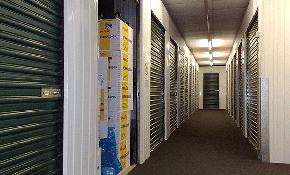NEW YORK CITY—In the last year, I have noticed that many long-term New York City owners have begun selling and exchanging into triple net leased properties nationwide. For many of them, it is a diversification play when the majority, or all of their holdings are here. For others, they realize that they can secure a much higher yield, especially when favorable long-term debt is secured.
The returns outside the City are looking much better as Manhattan cap rates have dropped to all-time lows of 3.4 percent for walk up apartment buildings. Meanwhile, retail which offers the highest return out of the asset classes, is only marginally better at 4.1 percent. At these cap rates, a buyer may still be able to get some positive leverage with a five year loan, but a long-term investor looking for a ten year fixed product would not receive the same benefit.
In 2007, during the last peak, investors took on negative leverage as borrowing rates were around 6 percent. Although this makes the case that New York City cap rates could compress even further, it certainly does not suggest that positive cash-on-cash returns are around the corner, especially when interest rates are expected to rise.
With all this in mind, it makes a great case for a 1031 exchange into NNN leased properties, where an investor can secure higher returns and better credit tenants. Although investors constantly complain about the lack of inventory in New York City, there are many of these opportunities available across the US.
For example, a CVS, with a 15-year lease in Georgia, will sell for about $3.5 million or a 5.8 percent cap rate. A Buffalo Wild Wings in New Mexico will sell at a 6.25 percent cap rate. Higher cap rates of 8-9 percent are available for discount store franchises, but buyers should be cautioned that without a sufficient corporate guarantee, these are risky propositions. If the tenant vacates in a remote location, a replacement tenant may not be easy to find.
We demonstrated how $10.5 million in net sale proceeds could be reinvested into $26.5 million of NNN leased properties at a blended cap rate of 5.73 percent, for a client considering a sale of a rent regulated apartment building. This portfolio of NNN leased properties included tenants such as CVS, Walgreens, and Citibank with an average of 15-year leases. If the buyer financed 60 percent of the purchase price for 10 years at 4 percent interest with 30-year amortization, it produced a cash-on-cash return of 6.13 percent, with a net cash flow of $592,039 in year one. This is far better than the less than $350,000 of net operating income the owner currently had.
Furthermore, the same client complained about the management intensity, rising expenses, and the newly passed rent guidelines act, which not only froze one year increases, but also made it very difficult to charge market rents for the apartments. The idea of owning virtually management free assets and increasing cash flow made a lot of sense to that owner.
It is important to remember that these NNN leased properties are not bonds. It is real estate. When buying these properties, investors should look to invest in growing cities where even if they have credit, a Radio Shack type of situation will not leave them with a vacant store that cannot be replaced.
With all of these considerations, it would seem that this exchange would be an easy decision for a New York City owner to make; however the long-term appreciation they have enjoyed over the years makes it a tough decision. That may soon change, as locking in long-term debt for these types of exchanges will not be around forever, nor will these historic low cap rates.

















 Copyright © 2024 ALM Global, LLC. All Rights Reserved.
Copyright © 2024 ALM Global, LLC. All Rights Reserved.